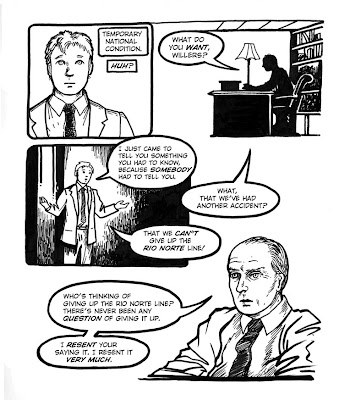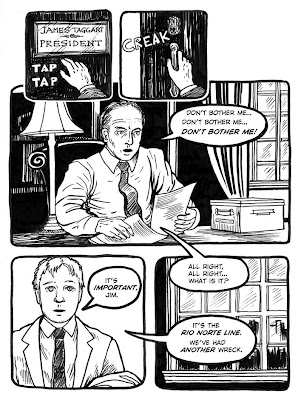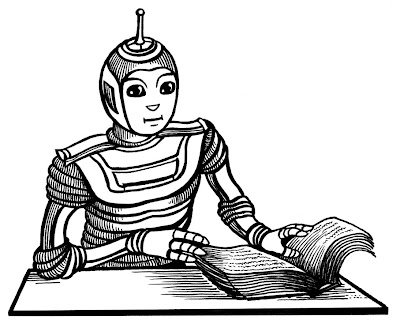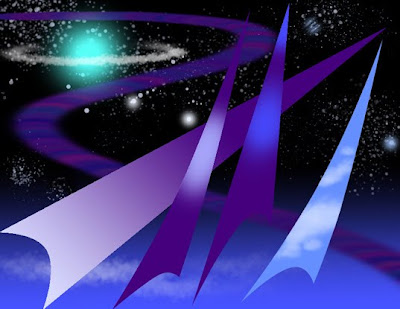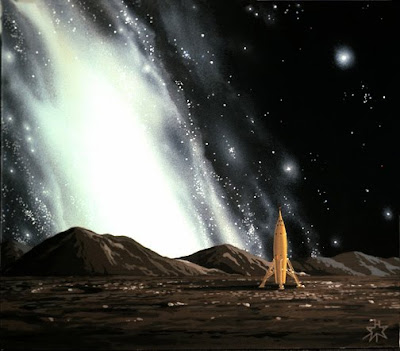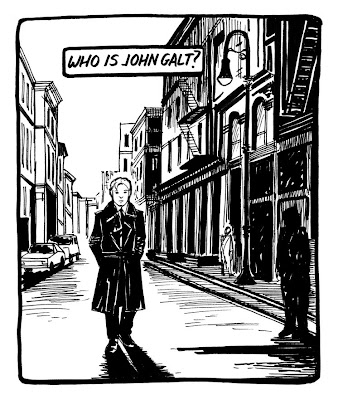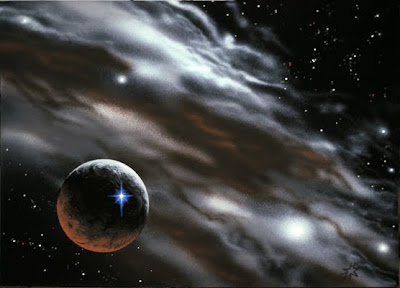
I learned to love heavy industry when I was young, from my father who was impressed with it in a sort of Socialist Realist way. I was privileged to see the steel mills of Youngstown, Ohio in 1973, before they disappeared. And I am probably one of the few people who rejoice when driving through the refinery area of Elizabeth, New Jersey on the Jersey Turnpike. I love the towers, the complexity of metal beams and tubes and platforms, the primal shapes and geometry, and of course the volcanic power of flames and furnaces and gas jets lighting up the night sky.
Madame Rand feels the same way. In ATLAS SHRUGGED she spends rapturous pages talking about the thrill of heavy industry, whether it be refineries or steel mills or railroads or mines. She has absolutely no sympathy for environmentalism; she loved smokestacks. This is, as she would put it, "the shape of Man's achievement on earth." And she meant man, not "people's." These grand, phallic structures are the work of males, through and through, from design to forging to building to operation. You don't hear that said very much. It's politically incorrect. And yet the macho power of heavy industry resonates throughout Rand's book. Rand visited steel mills doing her research for the book, but she portrayed them not so much as engineering but as a kind of artistic symbol for the brilliant industrial achievements she exalted. It's not socialist realism...it's capitalist fantasy.
I did this picture in that busy year of 1984, 25 years ago. It shows new rockets being moved through a giant assembly structure. This structure, of course, is not really a rocket assembly. It's gantries and transporters from a steel mill. I have a large library of books about heavy industry, filled with exciting pictures of these complex structures. The design is deliberately retro, even for the 80s. If you look closely (click on the picture for a somewhat larger version) you can see tiny figures moving about in the metal network, going about their business. Painting is acrylic on illustration board, 14" x 18".
25 years later, there is hardly any of this earth-shaking heavy industry left in the USA. It's all in China or India or some other ambitious place that doesn't mind danger and pollution. I'm not sure just what kind of capitalist fantasy we could have in 2009. Web 2.0? Video games? Sustainable energy from biomass? Software? Where are the girders, the great wheels, the mighty engines? Where are the hardhats? Where are the flames in the night? Atlas is poking away at computer code, lit by a pale, flickering screen in the darkness.
